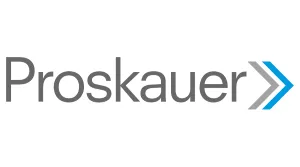- with readers working within the Advertising & Public Relations industries
- within Environment topic(s)
November 2025 AFRs and 7520 Rate
The November 2025 Section 7520 rate for use with estate planning techniques such as CRTs, CLTs, QPRTs and GRATs is 4.6%, the same as in October. The November applicable federal rate ("AFR") for use with a sale to a defective grantor trust or intra-family loan with a note having a duration of:
- 3 years or less (the short-term rate, compounded annually) is 3.69%, down from 3.81% in October;
- 3 to 9 years (the mid-term rate, compounded annually) is 3.83%, down from 3.87% in October; and
- 9 years or more (the long-term rate, compounded annually) is 4.62%, down from 4.73% in October.
The New York LLC Transparency Act
Statutory Framework: In December 2023, Governor Hochul signed S.B. 995-B, the original version of the New York LLC Transparency Act. In March 2024, Governor Hochul signed S.B. 8059, which effectively replaced the earlier version of the Act and is the operative statute for purposes of reviewing the reporting rules.
Scope: The New York LLC Transparency Act (the "New York Act") applies only to limited liability companies formed in, or registered to do business in, the State of New York—unless a specific exemption applies. Filings will be submitted to the New York Department of State each year, as discussed below.
Date Reporting Begins: Scheduled to take effect on January 1, 2026.
- LLCs formed or registered to do business in New York before January 1, 2026, have until December 31, 2026, to comply.
- LLCs formed or registered after January 1, 2026, must file a report within 30 days of submitting their articles of organization (for a domestic LLC) or within 30 days of filing an application to be registered as a foreign LLC in New York.
Reporting Obligations:
- Information to be reported for each beneficial owner and applicant: (1) full legal name, (2) date of birth, (3) current home or business street address, and (4) a unique identifying number from: (i) an unexpired passport, (ii) an unexpired state driver's license, or (iii) an unexpired identification card or document issued by a state or local government agency or tribal authority for the purpose of identification of that individual.
- As currently enacted, the New York Act incorporates by
reference certain definitions from the Federal Corporate
Transparency Act (the "Federal Act") to the extent
definitions relate to LLCs formed or authorized to do business in
New York. Specifically, the definition of "beneficial
owner," "reporting company" (only to the extent such
definition relates to a LLC formed or registered to do business in
the state of New York), and "applicant" in the New York
Act incorporate by reference the definitions used in the Federal
Act.
- On March 26, 2025, FinCEN published an interim final rule excluding entities formed in the United States from beneficial ownership reporting requirements under the Federal Act. Given the New York Act's reliance on definitions from the Federal Act, this FinCEN rule inadvertently undermined the intended coverage of the New York Act by enabling any LLC formed in the U.S. to escape from reporting requirements under the New York Act.
- In response, New York has advanced legislation—S.B. 8432 (and companion A. 8662-A)—to amend the New York Act by replacing cross-references to definitions under the Federal Act with state-specific definitions of "reporting company," "beneficial owner," and "applicant," thereby decoupling New York's regime from shifting federal guidelines. This bill passed both houses of the New York legislature in June 2025 but has not yet been signed into law as of this writing. The bill awaits action when the legislature reconvenes in January 2026—the same time that reporting requirements under the New York Act are set to take effect. Thus, the current state of play is highly uncertain.
- The New York Act similarly incorporates the twenty-three exemptions for reporting from the Federal Act. However, unlike the Federal Act, when applying an exemption a reporting company still has a filing obligation and must file an attestation of exemption under penalty of perjury stating the facts relating to the exemption. Such attestation would need to be filed each year the exemption applies.
- Once the initial filing is made, all reporting companies shall file an annual statement with the New York Department of State confirming or updating (1) beneficial ownership disclosure information, (2) street address of principal executive office, and (3) status as an exempt company (if applicable).
Penalties for Non-Compliance:
- If the failure to file an initial or annual statement exceeds 30 days, the reporting company will reflect as "past due" on the Department of State records and deemed "suspended." Any reporting company that is suspended may not conduct business in New York.
- Once past due, a fine of up to $500 for each day past due may be assessed. The past due status will be cured upon submitting the outstanding filing, paying a penalty of $250, and verification from the Attorney General that any fines that were assessed (if any) have been paid in full.
- A reporting company which fails to comply for a period exceeding two years shall be shown as delinquent on Department of State records. Similarly, a fine of up to $500 may be assessed for each day the reporting company is delinquent. The Attorney General has the ability to bring an action to dissolve or cancel (or authority to do business in New York could be annulled for entities outside of New York) an entity that is delinquent or for which false or fraudulent information was provided. Notably, unlike the Federal Act, the New York Act does not impose criminal penalties.
Estate of Rowland v. Commissioner, T.C. Memo. 2025-76 (July 15, 2025)
This case addressed whether the Estate of Billy S. Rowland could use the deceased spousal unused exclusion (DSUE) from the estate of his late wife, Fay Rowland, to reduce its federal estate tax liability. Fay's estate filed its Form 706 late—on January 2, 2018, several months after the extended due date—and sought to rely on the "safe harbor" under Rev. Proc. 2017-34, which allows certain late-filed returns to be deemed timely if "complete and properly prepared." However, Fay's return merely estimated the gross estate's value and omitted specific valuations of assets. The IRS determined the return was incomplete under Treasury Regulation §20.2010-2(a)(7), thereby invalidating the DSUE election and disallowing Billy's estate from using the unused exclusion.
The Tax Court granted partial summary judgment to the Commissioner, holding that Fay's return was both untimely and not "complete and properly prepared" as required by the safe harbor. The court emphasized that the special rule permitting estimated reporting applies only to marital or charitable deduction property that does not affect the value of other bequests. Because Fay's trust distributed portions to her husband, a family foundation, and various grandchildren, the estate was required to provide itemized valuations. The return's blanket use of estimated values violated the reporting rules, precluding the portability election. The court also rejected Billy's estate's claims of substantial compliance and equitable estoppel, finding that the return's omissions went to the heart of the statutory requirements and that the IRS committed no affirmative misconduct.
Ultimately, the court concluded that Fay's estate failed to make a valid and timely DSUE election, and therefore Billy's estate could not use Fay's unused exclusion amount to reduce its taxable estate. The Commissioner's motion for partial summary judgment was granted in full.
Young v. Commissioner, T.C. Memo. 2025-95 (Sept. 22, 2025)
Wesley and Janet Young contested IRS deficiency determinations and accuracy-related penalties for tax years 2013 and 2014. The dispute centered on whether their Oklahoma property, Pecandarosa Ranch, constituted an activity engaged in for profit under I.R.C. § 183. The Youngs argued that their ranch—comprising pecan farming, hay production, horse boarding, and team roping—was operated with a profit motive. The Commissioner contended it was a hobby, noting the persistent losses and lack of businesslike operations. The Tax Court found that although the Youngs devoted substantial time and funds to the ranch, they failed to demonstrate a genuine profit objective. The court noted the absence of a formal business plan during the relevant years, poor recordkeeping, and a pattern of large losses offsetting other income, especially from Ms. Young's profitable S corporation (ETI).
Applying the nine Treas. Reg. § 1.183-2(b) factors, the court found that six factors—including businesslike manner, recordkeeping, history of income/loss, and elements of personal pleasure—favored the IRS. Although Mr. Young had experience in ranching and invested significant time in the activity, the court emphasized that personal enjoyment (e.g., team roping) and substantial unrelated income suggested the operation lacked a dominant profit motive. The Tax Court also determined that the landholding and ranching activities were separate for purposes of Treas. Reg. § 1.183-1(d)(1), rejecting arguments that property appreciation could establish a profit intent. The court characterized Pecandarosa Ranch primarily as a personal residence with recreational elements, rather than a commercial enterprise.
Ultimately, the court held that the ranch was not engaged in for profit and sustained the IRS's disallowance of deductions under § 183. It also upheld 20% accuracy-related penalties under § 6662, finding no reasonable cause or good-faith reliance on professional advice. The Youngs' accountant merely prepared returns and did not provide substantive tax advice. Accordingly, the decision was entered for the Commissioner, affirming tax deficiencies plus penalties for 2013 and 2014.
Private Letter Ruling 202538004 (June 13, 2025; released Sept. 19, 2025)
In this ruling, the IRS considered whether a surviving spouse could roll over a lump-sum distribution from her deceased spouse's qualified pension plan into her own IRA when the benefit, though elected by the decedent before death, had not yet been paid at the time of death. The decedent had elected a lump-sum distribution and obtained spousal consent to waive the joint-and-survivor annuity, but died before payment. Under the plan's terms, the lump sum became payable to the decedent's estate. The surviving spouse, as both executor and sole beneficiary of the estate, sought to have the distribution paid to the estate and then rolled over into an IRA within 60 days.
The IRS analyzed §§ 402(c)(1), (3), (8), and (9) of the Internal Revenue Code, which allow a surviving spouse to treat a post-death distribution as if received by the employee for rollover purposes. Because the surviving spouse was the estate's sole executor and beneficiary, the IRS concluded that the payment could be treated as made directly to her, not to the estate. Consequently, she qualified as a "distributee" eligible to roll over the distribution into an IRA under § 402(c)(9), provided the rollover occurred within 60 days. The IRS further ruled that the rolled-over amount would be excluded from gross income under § 402(c)(1), except in the case of a conversion to Roth IRA.
The IRS ruled that (1) the surviving spouse would be treated as having received the pension distribution directly from the plan, (2) she was eligible to complete a tax-free rollover into her own IRA within 60 days under § 402(c)(9), and (3) the amount rolled over would not be included in income. The ruling reinforces that a surviving spouse who is both executor and sole beneficiary of an estate may effectuate a valid rollover of a decedent's retirement benefit that would otherwise be paid to the estate, ensuring continued tax deferral on those assets.
Private Letter Ruling 202538016 (June 10, 2025; released Sept. 19, 2025)
In this ruling, the IRS considered whether the judicial construction and subsequent division of a pre-1985 irrevocable trust would affect its exemption from the federal generation-skipping transfer (GST) tax under §2601. The settlor had created an irrevocable trust ("Trust 1") before September 25, 1985, for the benefit of his spouse, who possessed a testamentary limited power of appointment. Upon the spouse's death, that power was exercised to create a successor trust ("Trust 2") for a grandchild, who in turn exercised a limited power of appointment to establish another trust ("Trust 3") for the benefit of the grandchild's children and further descendants (a pot trust from which the trustee was required to make any distributions in proportionate, per stirpital shares to the beneficiaries unless a compelling reason warranted making disproportionate distributions). After disputes arose regarding the correct termination date under the state rule against perpetuities, the trustee sought state court construction and approval to divide Trust 3 into six identical sub-trusts ("Resulting Trusts")—one for each great-grandchild and their issue—to better meet differing investment and distribution needs.
The IRS reviewed §§2601 and 26.2601-1(b)(4)(i) of the regulations, which preserve GST tax exemption for irrevocable trusts created before September 25, 1985, so long as no additions or modifications shift beneficial interests to lower generations or extend the trust's vesting period. The Service found that the state court's construction of the termination provisions presented a bona fide issue and was consistent with applicable state law, thus satisfying §26.2601-1(b)(4)(i)(C). Furthermore, the proposed division and modification of Trust 3 into Resulting Trusts merely replicated the original beneficial interests, involved no shift to a lower generation, and did not extend the vesting period beyond what was permitted under the original trust and state law.
Private Letter Ruling 202538001 (June 24, 2025; released Sept. 19, 2025)
In this ruling, the IRS addressed whether a corporation's ineffective S corporation election could be treated as valid under the "inadvertent invalid election" relief provisions of §1362(f). Corporation X, incorporated under state law, elected S corporation status effective on a specified date. At that time, however, X was wholly owned by a partnership—an ineligible shareholder under §1361(b)(1)(B)—and the election form was signed by only one partner rather than all shareholders. Consequently, the election was invalid. The partnership itself was owned by Trust 1 (a grantor trust for which A was the deemed owner) and B, who later transferred their interest to Trust 2, also a qualifying grantor trust. The partnership subsequently dissolved, and B became the sole owner of X. Both X and its owners had consistently filed returns as if the S election were valid from the effective date.
The IRS analyzed §1362(f), which permits relief where an S election fails due to an inadvertent mistake and the taxpayer acts promptly to correct it. The Service found that X's election failure was inadvertent—caused by procedural errors and not by tax avoidance—and that all shareholders had acted consistently with S corporation treatment. Because the partnership dissolution and subsequent ownership structure satisfied S corporation eligibility requirements, the IRS allowed retroactive validation of X's S status.
The IRS ruled that X's S corporation election, though initially ineffective, would be treated as valid under §1362(f) from the original election date. The Service held that (1) A and B would be treated as proportionate shareholders of X through the partnership until its dissolution, and (2) B would be treated as the sole shareholder thereafter. The ruling was contingent on all required amended returns being filed within 120 days. This decision underscores the IRS's willingness to grant §1362(f) relief when defects in an S election arise from inadvertent errors rather than intentional noncompliance.
Daniels v. Commissioner of Revenue Services (Conn. Super. Ct., Oct. 15, 2024)
Facts:
- Jack Anderson, a wealthy businessman, died in 2015 while in Florida.
- He owned and regularly used residences in Connecticut (3 condominiums), Florida (beachfront home), and Arizona (house).
- Administrative indicators (driver's license, voter registration, banking) suggested Florida domicile.
- From 2006–2015, Anderson spent ~5½ months each year in Connecticut, 3½ months in Florida, and 3 months in Arizona.
- The estate argued Florida domicile; Connecticut assessed $13.2 million in estate tax.
Analysis:
- Court applied Connecticut's 28-factor domicile test under Conn. Agencies Regs. § 12-701(a)(1)-1(d)(8).
- Estate was required to prove by clear and convincing evidence that Anderson was not a Connecticut domiciliary.
- Administrative indicators (license, voter registration, banking) were deemed less persuasive, as they were one-time acts with minimal effect on daily life.
- Time spent and lifestyle: The most weight was given to Anderson's consistent choice to spend more time in Connecticut, where he lived a "full and complete life" (social, property, and personal connections).
- Equal connections: Connecticut and Florida were both socially and financially significant, but Anderson's greater physical presence in Connecticut tipped the balance.
- Due Process claim: Rejected — because the trial was de novo, any flaws in DRS training or factor-weighting were rendered moot.
Holding: The executor failed to prove Florida domicile. Connecticut domicile was upheld and the Commissioner's estate tax assessment sustained.
The content of this article is intended to provide a general guide to the subject matter. Specialist advice should be sought about your specific circumstances.











